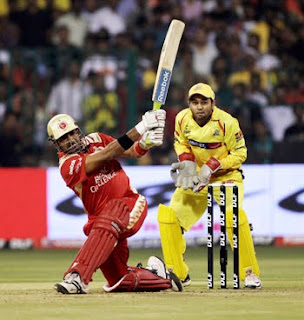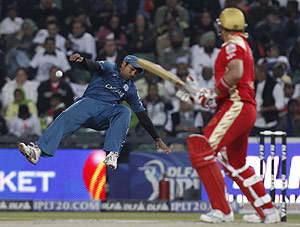Based on an improbable story by Kunal Basu, Aparna Sen directs a landmark film “The Japanese Wife”, produced by SaReGaMa Films of which she is the Chief Creative Director.

The film from the beginning is different and lyrical. The curiosity created by the big box arriving from Japan and the acceptability of such happenings in a small traditional Bengali village leads us on to a love story based on letters which has developed between Snehomoy (Rahul Bose) a school teacher in a remote village of the Sunderbans and a Japanese girl Miyagi(Chigusa) running a grocery shop near Yokohama in Japan.This sequence is tightly and brilliantly edited.Many letters later, they decide to marry with an exchange of a wedding ring and a pair of bangles by post. They behave like a devoted married couple without meeting each other for seventeen years!!!Their reality is based on photographs, gifts (like kites and champak flowers),rare phone calls and of course the letters!!!! Communicating in English which is a foreign language to both and therefore full of hesitation and mistakes—they still build a world like a devoted couple without being in physical proximity.
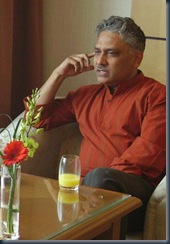
According to the writer Kunal Basu, who also plays a cameo in the film after his decades-ago debut as a child actor---“It is a relationship of great intimacy but no domesticity.”


Snehomoy’s guardian is his Mashi SoiMa (Moushumi Chatterjee)who has brought him up and who after an initial fretting accepts the situation, though she complains that her dream of grandchildren can never come through via letters!!!!

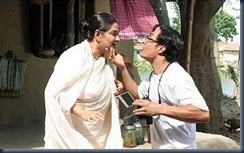
Enter a widow Sandhya(Raima Sen) and her son Paltu who come to live with them. Sandhya was once shown to Snehomoy for marriage, but he had shown no interest. Sandhya’s presence is disturbing for Snehomoy as she raises desires in him. Moreover, she cleans up his cluttered room and brings the peace of domesticity into his vision. They suddenly caress each other in an emotionally upsetting situation. Snehomoy immediately wants to write to Miyagi, his confidant and wife, but cannot.
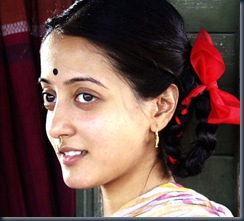
Meanwhile Miyagi falls ill and Snehomoy takes leave without pay to get assistance from local Ayurvedic and Unani and Homeopathic physicians, before he knows that she has cancer. A local doctor guides him to an oncologist who thinks that her lifespan is limited. Coming back, he gets caught in inclement weather, develops pneumonia, and cannot get the requisite medicines as the area is flooded. He dies, Getting the news, Miyagi shaves off the hair on her head(?Due to chemotherapy), adorns the white sari of a widow, and comes back to Snehomoy’s village. A monochrome last scene shows the dead Snehomoy floating in a boat onto an eternal destination. This scene is reminiscent of many Japanese and Korean films.
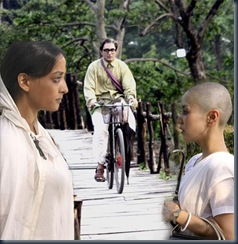
The direction is sensible and sensitive.The scenes have been crafted with great care and precision.The camera movements are beautifully controlled and expressive and seems so rightly balanced, Emotional highs are counterpointed with the mundane and the humourous. Yet the thread of tragedy is omnipresent. There is not an iota of crudity. even the scenes of masturbation integrate thoroughly.It is like a slap in the face for films like 3 Idiots which made up for a dearth of creativity by their vulgar manoevures. Truly creative people do not need such brittle props.
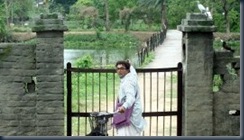
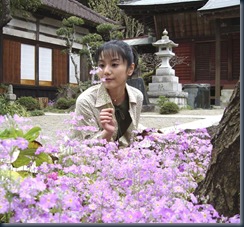

Anoy Goswami’s camera captures the Matla river in all its moods. The river dominates as a medium of communication and beauty and tragedy.The cinematograpghy is outstanding and will surely win awards for the magnificent frames, movements and colour balance. The mood of the film is greatly enhanced by Goutam Basu’s Art direction.
Sagar Desai’s use of Japanese music is superb. There is no song as such nor is one required. Clever mixes of local and effects sounds enhance the viewing pleasure.
The acting is controlled and mostly apt. Rahul Bose impresses with his hesitation and intensity, his care for others and his devotion to his wife. He is obsessed by the relationship yet hesitant and unable to call the shots. He can handle a polaroid, but cannot make a STD call.Though one wonders whether that led to the character being one dimensional. Even in the lively kite flying scenes, his energy level was a bit low. Moushumi Chatterjee acted with restraint but somehow was a misfit into the role. Having seen Chaya Debi or Molina Debi or even Shobha Sen or Sabitri Chatterjee in such roles, it is difficult to accept plucked eyebrows, her nose twitching, and her essential glamour in this role. Being a character actor is to sacrifice your self and Moushumi just could not do it.
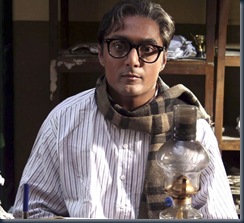
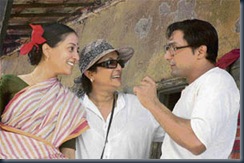
Raima Sen acted expressively, but again was too glamorous for her role. The contrast with the other village women in the boat and mela was too much. A girl brought up in the village would unhesitatingly pull up her sari to avoid the mud and would not walk so gingerly on the stone steps at the river bank.
Chigusa was outstanding in the last scenes. Her vulnerability and her strength brought great moments to the film.

The high point of this film was the kite competition. Superbly compiled and scripted , the transformation of a kite contest into a jingoistic issue was amusing. A kite with a broken thread suddenly became a symbol of loss and sorrow. The kites in the sky returned in the closing credit scenes to round off the film.
However there were some weak areas.
Assuming the story is of modern Bengal, considering the mobile phone, fax, STD booths, specialised Oncologists, Beedi jalai by Bips on a TV screen, and shots of Kolkata, it is somewhat difficult to believe the simplicity and naivety of the main protagonist Snehomoy and the village inhabitants. How can a modern schoolteacher be unaware of emails and fax? How can the villagers accept Snehomoy’s postal wedding? Everything here seemed a trifle too sweet. The massive storm sequence should have affected all the village people but that is not shown. Probably Aparna discarded that thought as she was painting on a smaller canvas.
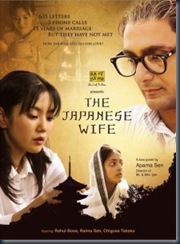
The dresses were too new and modern. Poor schoolteachers and their families do not wear sparkling whites, nor do they wear such sophisticated shoes. The contrast with the other characters was an eyesore.
The makeup of Moushumi was in certain scenes , too obvious. Do these villagers, specially widows, smear so much of cream and powder on their faces?
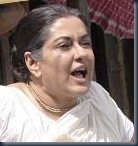
Sparkling whites and cream and powder and plucked eyebrows!!!!
One reaction was pithy.”This is a great film if it had been made by a debutant. For an experienced and established filmmaker like Aparna , this was a bit of a fairy story”.
Overall this film is an exceptional one, of great human moments and emotions which leave you affected at the end. It is a film of taste and fine beauty, of grace and wonder, of seriousness and great imagery. It is in many ways like a glorious Haiku.
It emphasizes the great differences between the good Bengali and the good Hindi film.
In my book highly recommendable and a Must—see.
